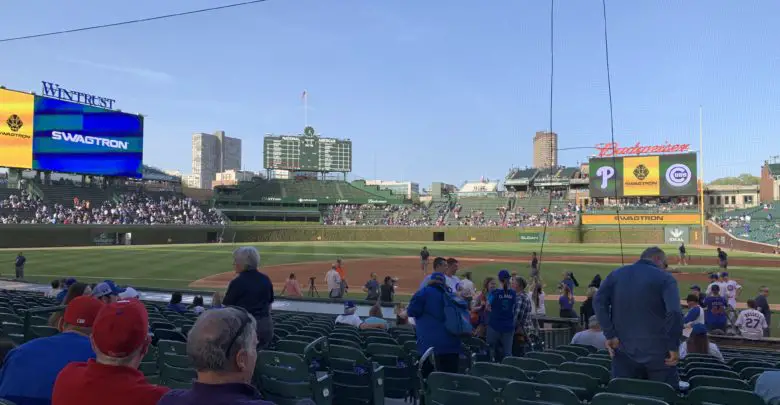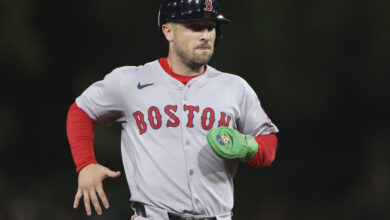
Only Egos at Greater Risk as Cubs Extend Safety Netting
Extended safety netting at ballparks has been a hot topic over the last year or so, with waves of teams proactively choosing to protect more and more fans. The Cubs are among those, having recently confirming their intent to extend Wrigley Field’s protective safety netting all the way to the parks “elbows.” That means moving them out from the edge of the dugout to the point at which the sidewalls angle and increase in height, basically where the bullpens used to be.
That announcement has prompted a variety of toasty takes about the potential impact of more netting on the fan experience. While it may improve safety, many claim it will come at the cost of a cheapened and less authentic fan experience. Before diving into the undoubtedly onerous costs of having the netting, it makes some sense to start with the cost of not having the netting.
Unless you’re among the small minority of social-media super-athletes out there, catching an object traveling in excess of 100 mph with your bare hands may represent a significant challenge. Some of us can only hope to deflect such projectiles, maybe at the cost of a broken or sprained finger. Not a big deal, assuming you have health insurance and the means to helps with resultant costs from doctor and/or therapy visits.
Of course, you could avoid all that by simply remaining hyper-vigilant and dodging out of the way of the baseball. No checking your phone, no helping your kids with their food, and no allowing anyone sitting near you to obscure your line of sight. All things considered, it’s probably best for teams to simply ban young children and reserve the first few rows for fans who’ve demonstrated elite-level visual acuity and reflexes.
That would rule out fans who are much older or much younger, fans who are living with the after-effects of a stroke or spinal cord injury, and many other subgroups that aren’t as easily able to avoid or deflect baseballs hit off the bats of professional athletes. It also eliminates those fans that, while physically capable, might be distracted by any of the basic realities of life that sometimes get in the way.
How else can we avoid such dangers like blindness following a baseball to the eye or permanent brain damage that will serve as the “before and after” point in the life of a child and her family? The potential loss of life is enough in and of itself to seriously consider the careful curation of fan demographics and requisite in-game behavior requirements.
Or teams could just, you know, extend the nets and make the game safer for everyone as MLB looks to stop the erosion of young fans.
Now that we’ve looked at the potential physical costs of not having nets, what are the costs of extending them? It’s certainly not a view of the game, as our featured image makes it quite clear that you can get a full view of the action from behind the protective measures. It certainly isn’t going to cost much financially, certainly not when compared to a Wrigley renovation that ended up at roughly three-quarters of a billion dollars.
One of the main gripes noted by detractors of safety netting is the lack of interaction with players and coaches, along with the inability to catch foul balls. Seriously, there are grown-ass men out there claiming that they go to games largely in order to snag fouls. But that assumes the nets can’t be retracted before the game or between innings, and that the only fouls that go into stands occur on line drives shy of the park’s elbows.
The primary cost of increased safety is an infatuation with a warped sense of personal responsibility and a belief that bad things only happen to people who deserve it. Those “Be Alert” signs are there for a reason, dammit!
In other words, pushing the nets farther down the line costs nothing other than a portion of ego you’re probably better living without. And if that’s the only price for protecting fans from a wide range of negative outcomes, there’s no excuse for not taking the requisite steps to do so. In an offseason that has seen them make some curious decisions in other areas, I’m glad the Cubs are continuing to make their confines as friendly as possible.

